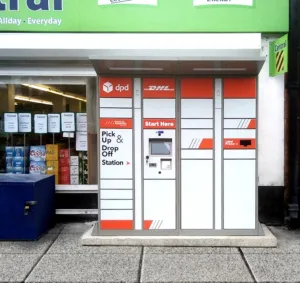by Chris Smith, Principal Consultant for CX & Technology at Team ITG
In the ever-evolving landscape of customer relationship management (CRM) and customer experience (CX), brands are facing an array of challenges as they adjust to meet the evolving content demands of their customers. Whether it’s the type of content, the quantity desired, or the level of personalisation that captures attention, brands are on a quest to align themselves with the preferences of their clientele.
Approaching this from a CRM/CX perspective, there are five key challenges that our clients confront in today’s swiftly changing environment. These challenges hold significant consequences for brands that fail to address them adequately.
Unleashing MarTech’s full potential
Recent insights from the Gartner Marketing Technology Survey reveal that marketers are harnessing only 42 per cent of their MarTech’s full potential, contributing to disconnected customer experiences. Team enablement plays a critical role on this, where marketers and platform users have little time for in-depth exploration of new features and functionalities.
In-house teams frequently find themselves mired in administrative tasks and manual data processes, diverting their focus from devising effective, targeted, and genuinely personalised marketing communications.
Recognising MarTech’s capacity to automate manual processes and streamline operations is critical. By understanding the breadth of automation capabilities, marketing teams can elevate their potential for strategic innovation.
No single customer view
Without a comprehensive single customer view (SCV), accurately measuring user behaviour and engagement becomes a challenge. This in turn presents challenges in delivering personalised web experiences and behaviour-based automated campaigns.
It also presents issues in matching with data outside of the marketing function, such as customer service. For instance, it is generally recommended to pause commercial emails when a customer has an ongoing support case.
Moreover, a lack of SCV poses compliance threats, particularly in light of the General Data Protection Regulation (GDPR). The inability to accurately hold consent leaves organisations vulnerable to non-compliance with GDPR guidelines.
No effective onboarding program
The initial phase of customer interaction, marked by sign-up or registration, represents a golden opportunity. Customers are most receptive during this period, therefore marketers need to exploit this narrow window of opportunity to guide new sign-ups towards desired outcomes.
Harnessing the potential of this onboarding stage entails steering customers toward actions that align with brand objectives. Furthermore, failure to provide a welcoming atmosphere post-sign-up imparts the impression that the brand does not particularly value its new customers or their patronage.
Lack of personalisation and segmentation
New customer sign-ups also hold potential for gathering valuable information to fuel future personalisation and segmentation efforts. However, marketers often miss this opportunity, depriving themselves of the ability to offer truly tailored services.
Research undertaken by Salesforce underscores the consumer desire for personal interactions. A staggering 81 per cent of consumers express the desire for brands to understand when and how to engage with them.
Additionally, 75 per cent of consumers are more likely to buy from organisations that recognise them, recommend options based on past purchases, and understand their purchase history.
A ‘preference centre’ emerges as a valuable tool to foster customer-centric communication. By granting audiences the autonomy to select their preferred content and channels, brands ensure that customers are not inundated with irrelevant messaging. This approach safeguards customer-brand relationships, fostering long-term loyalty.
No digital vision
A comprehensive digital vision serves as the bedrock of a brand’s strategy. This overarching strategy enables marketers to attribute targets and objectives while creating messaging that resonates with their audience to help to achieve these ambitions.
A strategic vision should encompass the entire customer journey, spanning acquisition channels to retention, win-back, and retargeting efforts.
Tackling these challenges
The landscape of marketing technology has undergone a notable shift, redefining the roles and responsibilities within organisations. Traditionally, the realm of IT has held dominion over these platforms, however now marketing is taking the reins, leading to more effective use of MarTech for a truly customer-driven approach.
The successful integration of Customer Data Platforms (CDPs) alongside orchestration engines empowers next-gen features like next-best-action strategies. This enables marketers to accelerate the depth and impact of customer onboarding and retention initiatives.
Recent seismic shifts in the technology landscape, such as the impending blocking of third-party cookies, have intensified the focus on first-party data. In this context, CDPs emerge as the most effective way to manage this.
The rapid pace of these technological changes necessitates a commitment to a clear, strategic vision for marketing, as well as a team with the agility to anticipate and respond to any issues before they derail the strategic vision.
As brands forge ahead, their overriding priority should be making life easy for their customers. Only then will the foundations be laid for the building of meaningful, lasting and mutually beneficial relationships.










